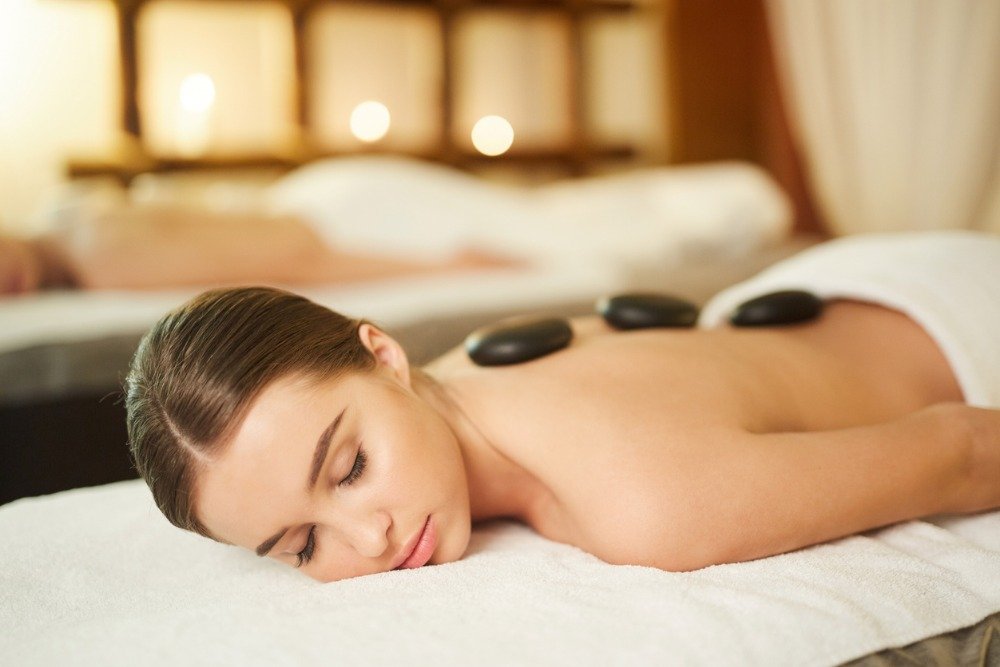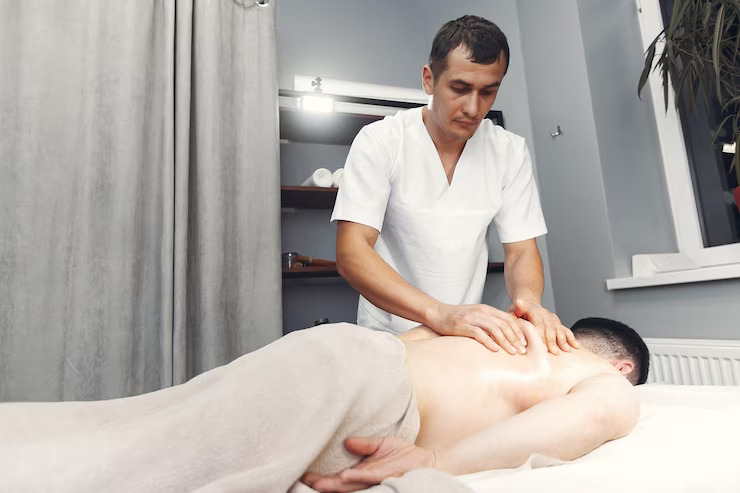In this article, we will discuss the question that many people have: how long is too long for a massage? As massage enthusiasts, we understand the importance of finding the right balance between providing a relaxing and therapeutic experience without overdoing it. Whether you’re a client or a massage therapist, it’s crucial to be aware of the potential risks and limitations that come with extended massage sessions. We’ll provide some guidelines and tips to help you make informed decisions about the length of your massage sessions.
When it comes to the ideal duration for a massage, it’s important to consider various factors such as your individual needs, health conditions, and the type of massage you’re receiving. While there isn’t a one-size-fits-all answer, most massage sessions typically last between 60 to 90 minutes. This timeframe allows enough time for the therapist to work on different areas of the body and address specific concerns, while also ensuring that you experience the full benefits of the massage. However, it’s important to listen to your body and communicate with your therapist throughout the session to ensure that you’re not pushing past your limits. Remember, the goal is to leave the massage feeling relaxed and rejuvenated, not sore and exhausted.
Determining the Ideal Massage Duration
When it comes to getting a massage, one of the most common questions people have is how long the session should last. The answer to this question depends on various factors, including individual needs, physical condition, and personal preferences. In this article, we will explore the ideal duration for different types of massage sessions and discuss the importance of communication during a massage.
Consideration of Individual Needs
Each individual has unique needs when it comes to massage therapy. Factors such as the type of massage desired, the specific goals the individual has for the session, and any existing health conditions or injuries must be taken into account. For someone seeking relaxation and stress relief, a shorter session may be sufficient. However, for someone seeking deep tissue work or relief from chronic pain, a longer session may be necessary.
Discussion with the Massage Therapist
Before scheduling a massage session, it is important to have a discussion with the massage therapist. They will be able to assess your specific needs and provide guidance on the ideal session duration. A qualified therapist will consider your goals, any existing health concerns, and their expertise in determining the appropriate length for your massage.
Assessment of Physical Condition
Another important factor to consider when determining the ideal massage duration is your physical condition. If you have any chronic injuries or conditions that require special attention, a longer session may be necessary. On the other hand, if you are generally healthy and just seeking relaxation, a shorter session may be all you need.
Effects of Different Massage Durations
The duration of a massage session can have varying effects on the body and mind. Let’s explore the benefits and considerations of shorter, standard, and extended massage sessions.
Shorter Massage Sessions
Shorter massage sessions typically last 30 minutes to 45 minutes. While these sessions may not provide the same level of deep relaxation as longer sessions, they can still offer several benefits. For busy individuals with limited time, shorter sessions can provide a quick relief from stress and tension. They are also a good option for those new to massage therapy, as they allow the body to gradually adapt to the sensations and benefits of massage.
The ideal duration for shorter massage sessions depends on your individual needs and goals. Some people may find that a 30-minute session is sufficient, while others may benefit from a slightly longer 45-minute session. It is important to communicate your expectations and preferences with your massage therapist, who can then tailor the session accordingly.
Standard Massage Sessions
Standard massage sessions typically last between 60 minutes to 90 minutes. These sessions provide a more comprehensive massage experience, allowing the therapist to address various areas of the body and provide deeper relaxation and therapeutic benefits. Standard sessions are suitable for most individuals, as they provide enough time for the therapist to work on specific areas of concern while still allowing for overall relaxation.
The recommended duration for standard massage sessions is usually 60 minutes, with the option to extend to 90 minutes for a more thorough and indulgent experience. However, it is important to remember that everyone’s needs and preferences are different. Some individuals may find 60 minutes sufficient, while others may benefit from the extra time provided by a 90-minute session.
Extended Massage Sessions
Extended massage sessions typically last 2 hours or more. These sessions are typically used for more intensive therapeutic work or for those who prefer a longer and more indulgent massage experience. Extended sessions allow the therapist to address multiple areas of the body in greater detail and provide deeper relaxation and relief.
The benefits of extended massage sessions include a prolonged sense of relaxation, increased therapeutic effects, and a deeper connection between the client and therapist. However, it is important to approach extended sessions with caution. Long durations of continuous pressure and manipulation can put strain on the body, and not everyone may tolerate extended sessions well. It is advisable to discuss your intentions and physical limitations with your massage therapist to determine the ideal duration for an extended session.

This image is property of www.champagneghost.com.
Importance of Communication during a Massage
Regardless of the duration of your massage session, communication with your massage therapist is key. Open dialogues with your therapist help them understand your specific needs, adapt their techniques accordingly, and ensure your comfort and satisfaction throughout the session.
Open Dialogues with the Massage Therapist
Before your massage begins, take a few moments to have a conversation with your therapist. Discuss any areas of concern, any injuries or health conditions, and your specific goals for the session. This information will help your therapist personalize the massage to suit your individual needs, ensuring you get the most out of the session.
Comfort Level and Preferences
During the massage, it is important to maintain an open line of communication with your therapist. If you feel any discomfort or if the pressure is too intense, speak up. Your therapist can adjust their techniques to suit your comfort level. Likewise, if you prefer a specific type of massage or have any preferences, let your therapist know. They are there to ensure your satisfaction and well-being.
Monitoring Sensations and Feedback
Throughout the massage, pay attention to how your body feels. If you experience any pain, discomfort, or unusual sensations, inform your therapist immediately. They can modify their techniques to address your concerns and avoid any potential harm. Additionally, providing feedback to your therapist after the session can help them better understand your experience and tailor future sessions to your needs.
Signs of Overexposure to Massage
While massage therapy offers numerous benefits, it is important to be aware of the signs of overexposure to massage. Pushing the body beyond its limits can have negative consequences both physically and mentally.
Physical Symptoms
Physical symptoms of overexposure to massage may include muscle soreness, fatigue, increased pain, and heightened sensitivity. These symptoms may indicate that the body has been worked on too intensely or for too long, and it is important to listen to your body’s signals and give it adequate time to rest and recover.
Mental and Emotional Exhaustion
Overexposure to massage can also manifest as mental and emotional exhaustion. This may include feeling overwhelmed, irritable, or emotionally drained. It is important to balance regular massage sessions with self-care practices and rest to avoid burnout.

This image is property of www.suzanneschaper.com.
Adhering to Professional Guidelines
Massage therapists are governed by professional guidelines and ethical considerations to ensure the safety and well-being of their clients. These guidelines include adhering to standard massage therapy regulations and prioritizing the client’s comfort and health.
Standard Massage Therapy Regulations
Massage therapists are trained to follow specific guidelines regarding the duration and techniques of massage. They are knowledgeable about the potential risks and benefits associated with different durations of massage and will always prioritize the client’s safety and well-being.
Ethical Considerations for Massage Therapists
Massage therapists are also bound by ethical considerations. They are committed to maintaining confidentiality, providing a safe and comfortable environment, and listening to their clients’ needs and preferences. If you have any concerns about the duration or techniques used during a massage session, it is important to communicate openly with your therapist.
Individual Differences and Customization
It is important to remember that every individual is unique, and the ideal massage duration may vary from person to person. Understanding your personal limits and adapting to your specific needs and conditions is crucial in ensuring a positive massage experience.
Understanding Personal Limits
Everyone has different tolerance levels and physical capabilities. It is important to listen to your body and communicate your limits with your therapist. They can then adjust the duration and intensity of the massage to ensure your comfort and safety.
Adapting to Specific Needs and Conditions
If you have any specific health conditions or injuries, it is important to inform your therapist before the session. They can then customize the massage to accommodate your needs and provide targeted relief in areas that require attention.
This image is property of qph.cf2.quoracdn.net.
Conclusion
Determining the ideal massage duration depends on various factors, including individual needs, physical condition, and personal preferences. Whether you opt for a shorter, standard, or extended session, open communication with your massage therapist is key. They can assess your specific needs, tailor the massage to suit your individual preferences, and ensure your comfort and satisfaction throughout the session. Remember to listen to your body, provide feedback to your therapist, and prioritize self-care to ensure a positive and beneficial massage experience.



